Elena Canorea
Communications Lead
Some people may wonder why a designer devotes so much time to the choice of typography when approaching a project. The truth is that typography is one of the most relevant aspects when making decisions about the design of our products since it will not only define part of the feeling that the user perceives when he sees it, but it will also be decisive to facilitate the transmission and understanding of the message we want to communicate to him. It is therefore of utmost importance to take into account specific knowledge and aspects to choose the fonts that best suit our project.
When we talk about typography, it is essential to know that there is a division between two fields to work on the different aspects of this broad discipline. Thus, we can talk about microtypography and macrotypography.
It studies all aspects of typographic detail and includes such important aspects as:
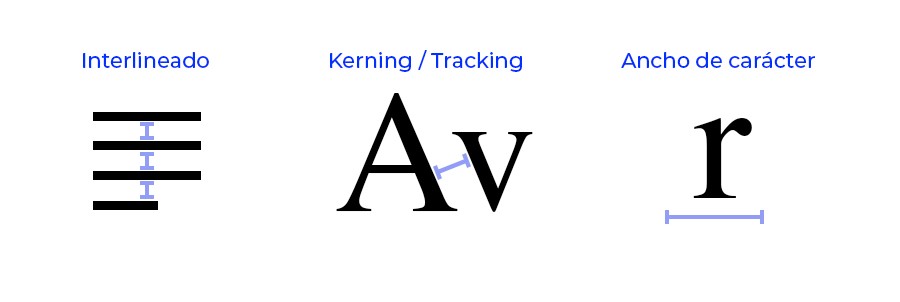
Microtypography
It studies the general composition, how texts are organized on a page, and the overall effect they produce. Within this branch, we find aspects such as:
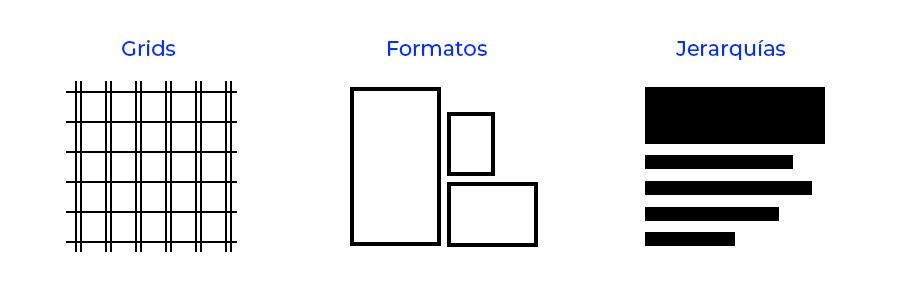
Macrotypography
Typographic anatomy refers to the individual characteristics of each glyph that make up a typeface. The glyphs are the characters of that font, and these characteristics are what define and give personality to each typeface family.
The body of each glyph within a typeface is composed of multiple parts, but there are some elements that are more important in defining and giving this personality. The most important of these are:
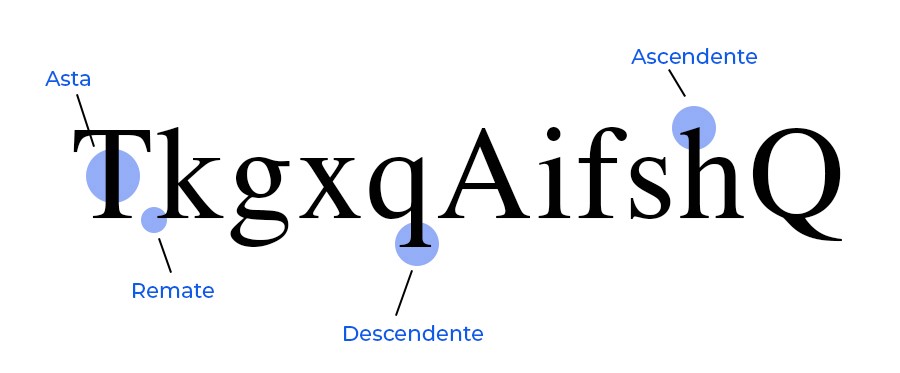
Most relevant parts of a glyph
In the previous sections, some important concepts have been mentioned that greatly influence and determine the typographic choice and I explain them below:
Typographic contrast is the aspect ratio between the thick and thin strokes of the glyphs. In general, the contrast is defined by the thickness of the shaft. We can distinguish between high and low contrast. The lower the contrast of a typeface, the more homogeneous and solid in its appearance, with no great difference between the shaft and its finials.
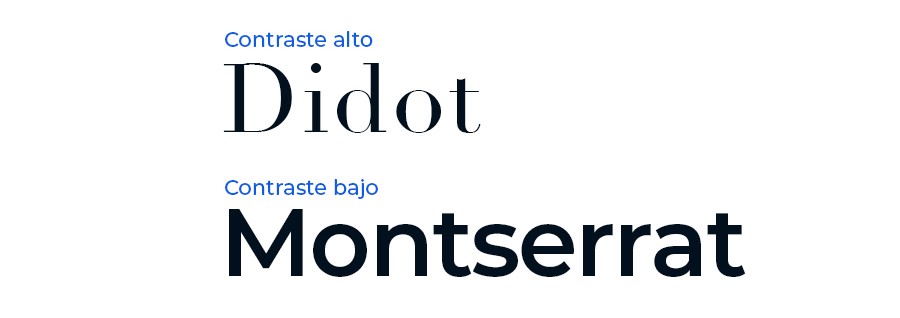
Contrast
It is the line where the typography is set. It is very important to take it into account when choosing typefaces to create our typographic combinations.
Depending on the height of the baseline at which the typeface has been designed, it may give the impression that it is higher or lower. If we take typefaces with different baselines, they may be misaligned and generate a strange effect.
It is the line that delimits the height of the ‘x’. The x has no ascenders or descenders, so its body is used as a reference measure to define the size of the typeface. Depending on the height of the ‘x’, a typeface can be larger or smaller if it has the same assigned value (e.g. 16 px). This aspect is also important to take into account when choosing typefaces to combine them, because if we take two typefaces with very different sizes of the ‘x’ it may generate undesired effects when working with the sizes.

Baseline and ‘x’ height
They are the typographical terms used to define the spaces between letters.
Kerning is the separation between pairs of letters. It is used to make corrections between pairs of letters that, due to their design, would be too far apart from the default tracking.
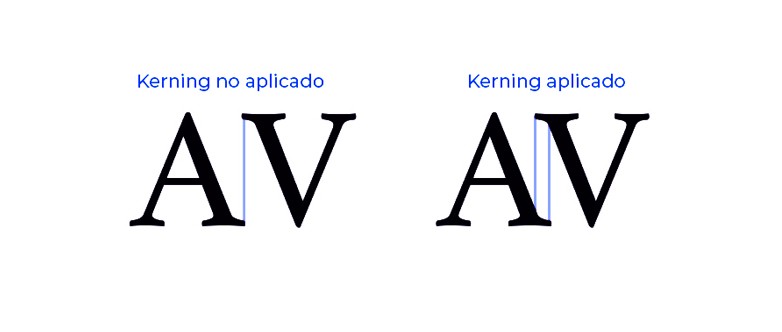
Kerning
Tracking is the separation between all the characters that make up a word. On the web, it is known as ‘letter spacing’.
These typography values are predetermined by the typographer who designed it, but it is generally advisable to modify it according to our needs to facilitate readability to the user whenever necessary.
* It is advisable to move between values of 0 / 1 or 0 / -1 because if we go too far we run the risk of compromising readability.
![]()
Comparison between tracking and kerning
Within the same typeface family, we can find different variables according to their weight and width:
Weight: black, bold, semi-bold, medium, regular, light, thin…
Width: compressed, condensed, extended, narrow
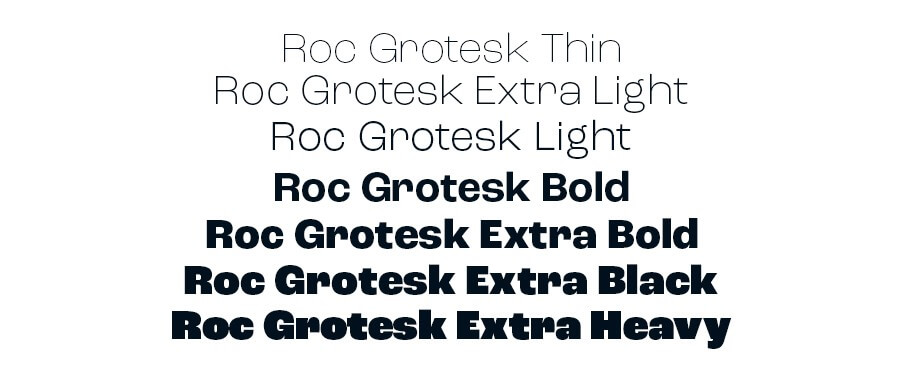
Typographical classification
Typographic styles can also classify typefaces. There are several styles, but the main ones are:
They are old typefaces that have existed since the beginning of typographic printing. They are usually very legible. The most common is Italian or Roman. They transmit seriousness and elegance. They are usually used for the body of the text (paragraphs).
They lack finials, and this condition gives them a modern feel. Their clean style conveys security and visual clarity and allows for quick reading in fractions of seconds. They are usually used for the body text (paragraphs, paragraphs).
They emulate handwriting or calligraphy and are often used in signatures, titles, and invitations. It is associated with elegance and also with craftsmanship.
Decorative typography is used to liven up and give character to publications and give them expressiveness. There are all kinds (horror, cartoon, groovy, etc.) and they are usually used in very specific parts of the text such as, for example, the headlines.

Typographic styles
It is defined as the rhythm that marks the horizontal space between the characters and between the words of each line and affects the readability of the body of text.
The more homogeneous and consistent the horizontal rhythm, the more legible it will be. This is influenced by:
In web design, it is challenging to control the horizontal rhythm. The letter-spacing can only be adjusted globally.
As for justification, it is better to use left justification, except in exceptions where we will use right justification (tables, numbers) or centering for short texts. We should always try to avoid justifying columns on both sides since we cannot manipulate the tracking individually or make cuts between words, which generates the formation of rivers and streets in the text mass.
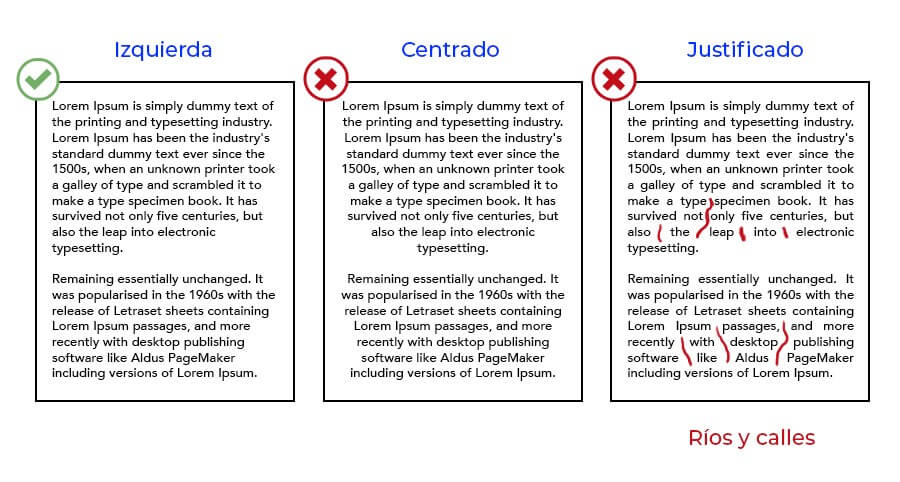
Horizontal rhythm
It is defined as the rhythm that marks the vertical space between paragraphs and between the lines that compose them.
To create a good vertical rhythm, it is necessary to achieve a good consistency of the spaces between elements. This is influenced by:
Line spacing differs from how it is applied on screen and how it is applied on paper.
The text sits on a line called the base grid from which the descenders descend. The line spacing is the space between one line of the base grid and the next.
Line spacing is applied proportionally both above and below the typeface. This helps to better distribute the elements and makes the spaces between them more homogeneous. It also allows us to better arrange the interactive elements; for example, in a button, aligning both the button box and the typography so that everything is well centered.
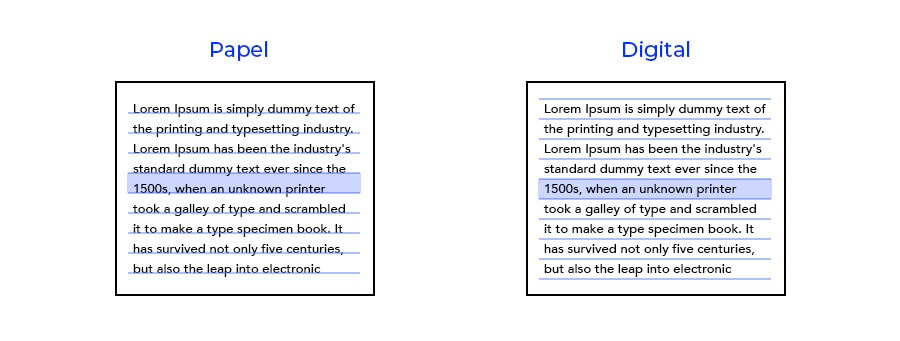
Vertical rhythm
On the web, we usually apply many different types of font sizes to establish the hierarchy of our elements; it is essential to follow certain guidelines when doing so since, if we were to give random values to the sizes:
For all these reasons it is better to rely on a system of mathematical scales that calculates the values by means of a ratio.
For this we have tools that help us to generate these values with different types of ratios, automatically; but, in spite of using them, we will always have to make small modifications to adapt them correctly to our needs.
If we use this type of mathematical scale we will get:
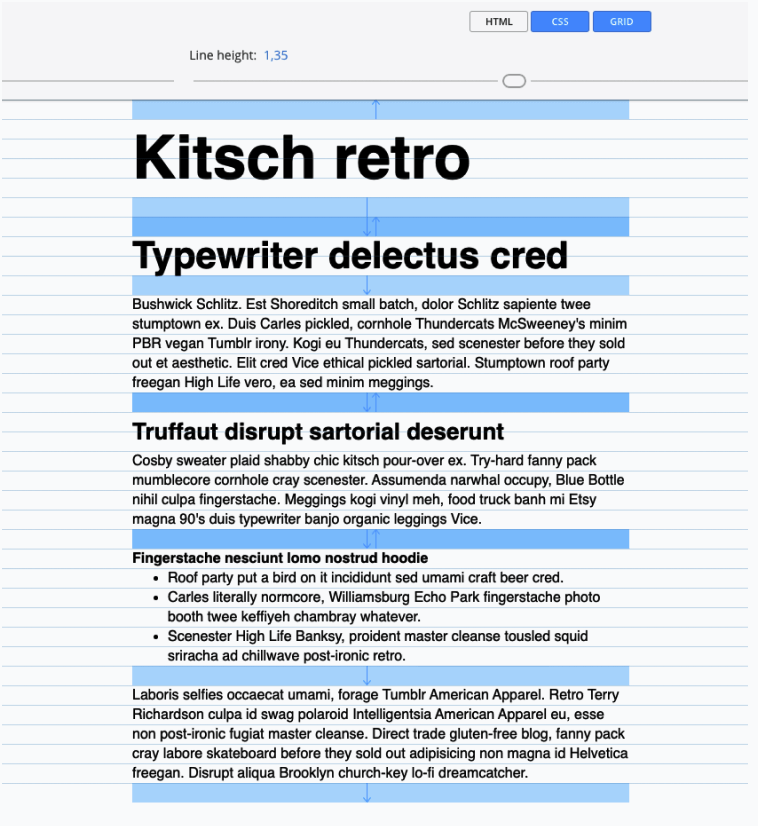
Grid Lover
These are the user’s reading habits. Today, we live in an era in which we receive more information than we can consume on a constant basis. This information saturation affects our reading patterns.
The way we read on the web is not the same as the way we read on paper. On the web, we scan texts and only stop to read what is important. This is why it is very important that the content is well structured and hierarchical so that it can be easily detected by the user when scanning.
The main reading patterns on the web are:
The user scans from left to right and from top to bottom looking for points of interest until he detects them and stops. This pattern is usually found in texts designed as a single column and a single block, such as reading articles.
It is more common in pages where the content is more dispersed by the composition and there is no central column of text. The content is composed in different blocks, as for example in a commercial content page.
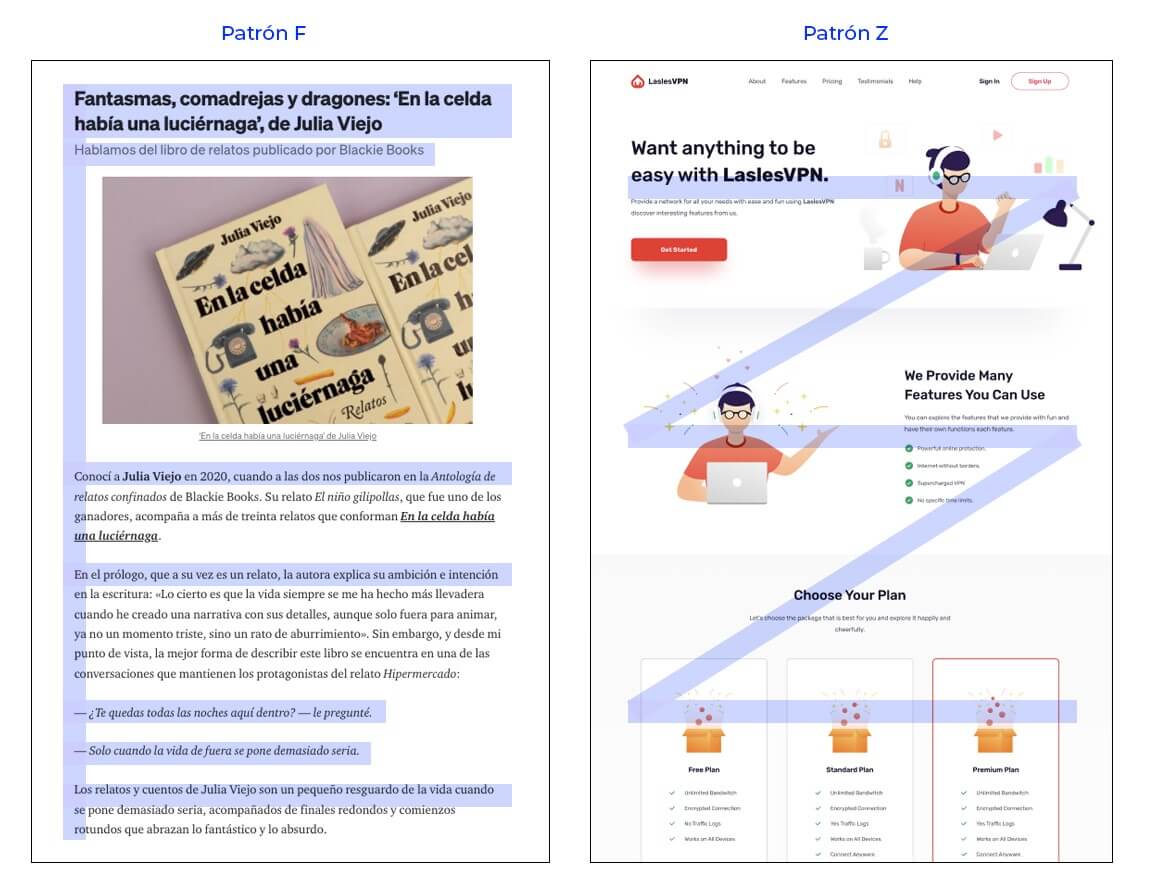
Reading patterns
Within a website we can find 3 categories of text according to their functions:
Headlines are usually used to define the tone of the content and transmit sensations to the user. In this text, we can use more expressive typographies. They are large texts that aim to attract the reader’s attention.
They have more freedom to be more expressive or decorative than the typography of the body text. With this expressiveness, we will not only be transmitting sensations to the user but will also help us to generate a more attractive aesthetic for our typographic design.
In this part, readability takes precedence over everything else. Being content with a large amount of text, the user needs to have a comfortable reading that does not generate visual load or fatigue by making an extra effort to read.
It is said that serif fonts are more legible on paper and sans-serif fonts are more legible on screen, but other more important aspects when choosing a typeface that works on screen include:
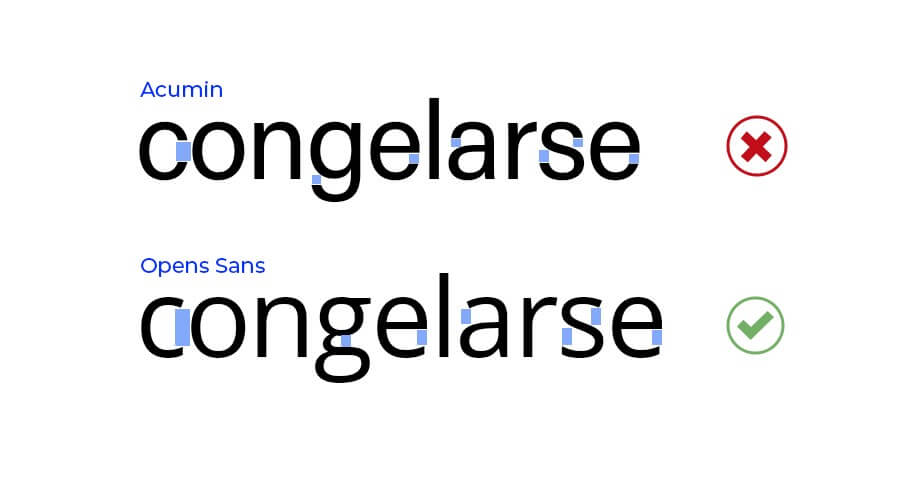
Aperture
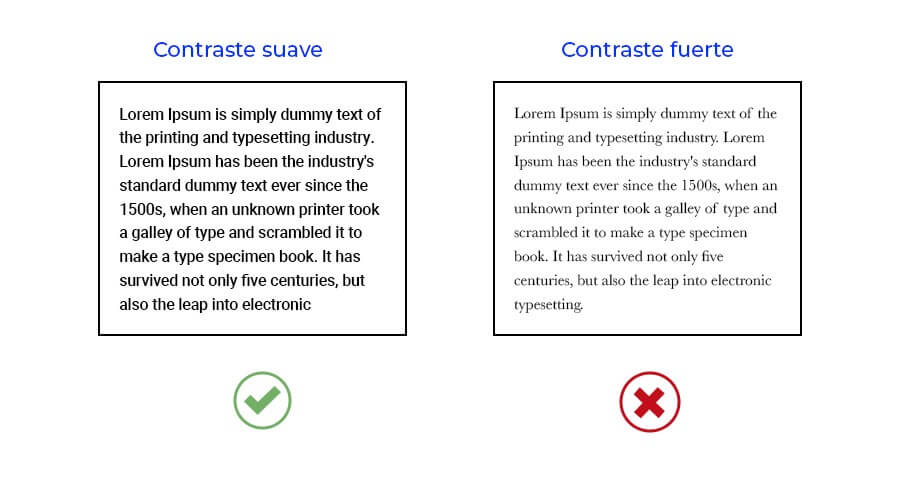
Importance of contrast and homogeneity
These are the elements that help the user to move through the web content. The most important aspect of interactive elements is their affordance, that is, that they have the necessary characteristics to be perceived by the user as an actionable element with which he can interact. These elements are, for example:
Interactive texts are usually small, so our typography must be easily scannable and readable at reduced sizes. For this reason, it is advisable to:

Readability test
Some typefaces have a caption variant designed to look good on small and interactive elements.
Interactive elements can be differentiated by:
The most recognizable, since the beginning of the web, is to put them in blue and underlined, but over time we have learned that if a text is of a different color than the mass of text or is only underlined, it is probably also a link.
The interactive text should not be the same color as non-interactive text unless it is underlined (although it is always better to use a different color). It is also advisable to avoid using blue for non-interactive text.
Both could cause confusion to the user since blue has always been used for hyperlinked text since the beginning of the web.
Another essential thing is to maintain consistency, always applying the same treatment to all the links on our website.

Link
When deciding the box width of our texts, we must take into account certain essential aspects, such as, for example, the size of the body text or the line spacing, which are closely related to this. Therefore, if you change any of these values, the rest will have to be modified accordingly.
According to John Kane’s Manual of Typography, the line width for a paragraph should be between 45 and 75 characters; 66 characters is about the ideal number of characters for comfortable reading on screen.
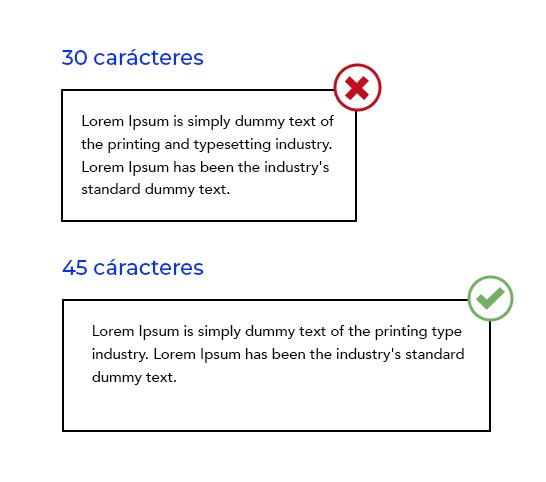
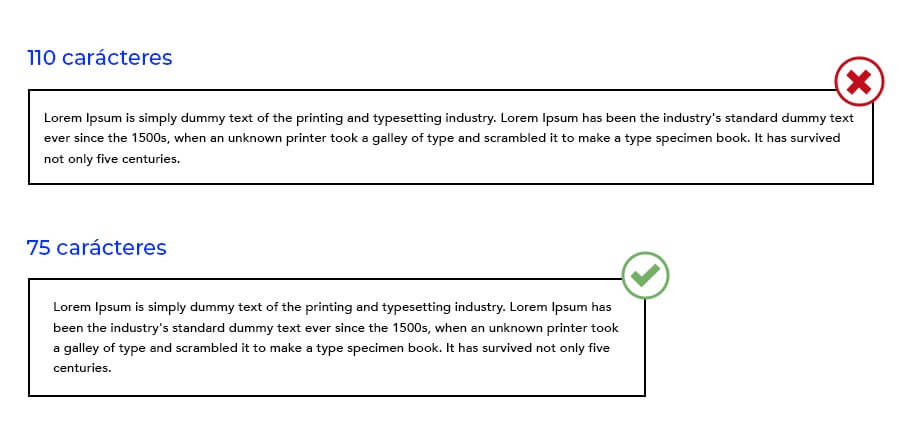
Variable fonts are fonts that have no weights. They are in a single file, and their variants change depending on the value you give to the shaft.
The advantage of these fonts is the versatility they offer in a single file. If we wanted to have all the weights of a typeface on a website, we would have to upload all the files to the server, while in this way, with a single file, modifying the values through the css, we have all the available options at our fingertips.
In addition to this, it can also be used to create animation efects like this one.

Variable font
After analyzing all these aspects concerning typography, we can take for granted the importance of stopping to think about which will be the most appropriate for our project and take our time to choose well, as it will be a decisive point in our design and will make a big difference in our products.
Reference sources
Raúl Marin, John Kane, Gemma Busquets, Oliver Schöndorfer, Enric Jardí, Ellen Lupton, Javier Alcaraz
Elena Canorea
Communications Lead
| Cookie | Duration | Description |
|---|---|---|
| __cfduid | 1 year | The cookie is used by cdn services like CloudFare to identify individual clients behind a shared IP address and apply security settings on a per-client basis. It does not correspond to any user ID in the web application and does not store any personally identifiable information. |
| __cfduid | 29 days 23 hours 59 minutes | The cookie is used by cdn services like CloudFare to identify individual clients behind a shared IP address and apply security settings on a per-client basis. It does not correspond to any user ID in the web application and does not store any personally identifiable information. |
| __cfduid | 1 year | The cookie is used by cdn services like CloudFare to identify individual clients behind a shared IP address and apply security settings on a per-client basis. It does not correspond to any user ID in the web application and does not store any personally identifiable information. |
| __cfduid | 29 days 23 hours 59 minutes | The cookie is used by cdn services like CloudFare to identify individual clients behind a shared IP address and apply security settings on a per-client basis. It does not correspond to any user ID in the web application and does not store any personally identifiable information. |
| _ga | 1 year | This cookie is installed by Google Analytics. The cookie is used to calculate visitor, session, campaign data and keep track of site usage for the site's analytics report. The cookies store information anonymously and assign a randomly generated number to identify unique visitors. |
| _ga | 1 year | This cookie is installed by Google Analytics. The cookie is used to calculate visitor, session, campaign data and keep track of site usage for the site's analytics report. The cookies store information anonymously and assign a randomly generated number to identify unique visitors. |
| _ga | 1 year | This cookie is installed by Google Analytics. The cookie is used to calculate visitor, session, campaign data and keep track of site usage for the site's analytics report. The cookies store information anonymously and assign a randomly generated number to identify unique visitors. |
| _ga | 1 year | This cookie is installed by Google Analytics. The cookie is used to calculate visitor, session, campaign data and keep track of site usage for the site's analytics report. The cookies store information anonymously and assign a randomly generated number to identify unique visitors. |
| _gat_UA-326213-2 | 1 year | No description |
| _gat_UA-326213-2 | 1 year | No description |
| _gat_UA-326213-2 | 1 year | No description |
| _gat_UA-326213-2 | 1 year | No description |
| _gid | 1 year | This cookie is installed by Google Analytics. The cookie is used to store information of how visitors use a website and helps in creating an analytics report of how the wbsite is doing. The data collected including the number visitors, the source where they have come from, and the pages viisted in an anonymous form. |
| _gid | 1 year | This cookie is installed by Google Analytics. The cookie is used to store information of how visitors use a website and helps in creating an analytics report of how the wbsite is doing. The data collected including the number visitors, the source where they have come from, and the pages viisted in an anonymous form. |
| _gid | 1 year | This cookie is installed by Google Analytics. The cookie is used to store information of how visitors use a website and helps in creating an analytics report of how the wbsite is doing. The data collected including the number visitors, the source where they have come from, and the pages viisted in an anonymous form. |
| _gid | 1 year | This cookie is installed by Google Analytics. The cookie is used to store information of how visitors use a website and helps in creating an analytics report of how the wbsite is doing. The data collected including the number visitors, the source where they have come from, and the pages viisted in an anonymous form. |
| attributionCookie | session | No description |
| cookielawinfo-checkbox-analytics | 1 year | Set by the GDPR Cookie Consent plugin, this cookie is used to record the user consent for the cookies in the "Analytics" category . |
| cookielawinfo-checkbox-necessary | 1 year | This cookie is set by GDPR Cookie Consent plugin. The cookies is used to store the user consent for the cookies in the category "Necessary". |
| cookielawinfo-checkbox-necessary | 11 months | This cookie is set by GDPR Cookie Consent plugin. The cookies is used to store the user consent for the cookies in the category "Necessary". |
| cookielawinfo-checkbox-necessary | 11 months | This cookie is set by GDPR Cookie Consent plugin. The cookies is used to store the user consent for the cookies in the category "Necessary". |
| cookielawinfo-checkbox-necessary | 1 year | This cookie is set by GDPR Cookie Consent plugin. The cookies is used to store the user consent for the cookies in the category "Necessary". |
| cookielawinfo-checkbox-non-necessary | 11 months | This cookie is set by GDPR Cookie Consent plugin. The cookies is used to store the user consent for the cookies in the category "Non Necessary". |
| cookielawinfo-checkbox-non-necessary | 11 months | This cookie is set by GDPR Cookie Consent plugin. The cookies is used to store the user consent for the cookies in the category "Non Necessary". |
| cookielawinfo-checkbox-non-necessary | 11 months | This cookie is set by GDPR Cookie Consent plugin. The cookies is used to store the user consent for the cookies in the category "Non Necessary". |
| cookielawinfo-checkbox-non-necessary | 1 year | This cookie is set by GDPR Cookie Consent plugin. The cookies is used to store the user consent for the cookies in the category "Non Necessary". |
| cookielawinfo-checkbox-performance | 1 year | Set by the GDPR Cookie Consent plugin, this cookie is used to store the user consent for cookies in the category "Performance". |
| cppro-ft | 1 year | No description |
| cppro-ft | 7 years 1 months 12 days 23 hours 59 minutes | No description |
| cppro-ft | 7 years 1 months 12 days 23 hours 59 minutes | No description |
| cppro-ft | 1 year | No description |
| cppro-ft-style | 1 year | No description |
| cppro-ft-style | 1 year | No description |
| cppro-ft-style | session | No description |
| cppro-ft-style | session | No description |
| cppro-ft-style-temp | 23 hours 59 minutes | No description |
| cppro-ft-style-temp | 23 hours 59 minutes | No description |
| cppro-ft-style-temp | 23 hours 59 minutes | No description |
| cppro-ft-style-temp | 1 year | No description |
| i18n | 10 years | No description available. |
| IE-jwt | 62 years 6 months 9 days 9 hours | No description |
| IE-LANG_CODE | 62 years 6 months 9 days 9 hours | No description |
| IE-set_country | 62 years 6 months 9 days 9 hours | No description |
| JSESSIONID | session | The JSESSIONID cookie is used by New Relic to store a session identifier so that New Relic can monitor session counts for an application. |
| viewed_cookie_policy | 11 months | The cookie is set by the GDPR Cookie Consent plugin and is used to store whether or not user has consented to the use of cookies. It does not store any personal data. |
| viewed_cookie_policy | 1 year | The cookie is set by the GDPR Cookie Consent plugin and is used to store whether or not user has consented to the use of cookies. It does not store any personal data. |
| viewed_cookie_policy | 1 year | The cookie is set by the GDPR Cookie Consent plugin and is used to store whether or not user has consented to the use of cookies. It does not store any personal data. |
| viewed_cookie_policy | 11 months | The cookie is set by the GDPR Cookie Consent plugin and is used to store whether or not user has consented to the use of cookies. It does not store any personal data. |
| VISITOR_INFO1_LIVE | 5 months 27 days | A cookie set by YouTube to measure bandwidth that determines whether the user gets the new or old player interface. |
| wmc | 9 years 11 months 30 days 11 hours 59 minutes | No description |
| Cookie | Duration | Description |
|---|---|---|
| __cf_bm | 30 minutes | This cookie, set by Cloudflare, is used to support Cloudflare Bot Management. |
| sp_landing | 1 day | The sp_landing is set by Spotify to implement audio content from Spotify on the website and also registers information on user interaction related to the audio content. |
| sp_t | 1 year | The sp_t cookie is set by Spotify to implement audio content from Spotify on the website and also registers information on user interaction related to the audio content. |
| Cookie | Duration | Description |
|---|---|---|
| _hjAbsoluteSessionInProgress | 1 year | No description |
| _hjAbsoluteSessionInProgress | 1 year | No description |
| _hjAbsoluteSessionInProgress | 1 year | No description |
| _hjAbsoluteSessionInProgress | 1 year | No description |
| _hjFirstSeen | 29 minutes | No description |
| _hjFirstSeen | 29 minutes | No description |
| _hjFirstSeen | 29 minutes | No description |
| _hjFirstSeen | 1 year | No description |
| _hjid | 11 months 29 days 23 hours 59 minutes | This cookie is set by Hotjar. This cookie is set when the customer first lands on a page with the Hotjar script. It is used to persist the random user ID, unique to that site on the browser. This ensures that behavior in subsequent visits to the same site will be attributed to the same user ID. |
| _hjid | 11 months 29 days 23 hours 59 minutes | This cookie is set by Hotjar. This cookie is set when the customer first lands on a page with the Hotjar script. It is used to persist the random user ID, unique to that site on the browser. This ensures that behavior in subsequent visits to the same site will be attributed to the same user ID. |
| _hjid | 1 year | This cookie is set by Hotjar. This cookie is set when the customer first lands on a page with the Hotjar script. It is used to persist the random user ID, unique to that site on the browser. This ensures that behavior in subsequent visits to the same site will be attributed to the same user ID. |
| _hjid | 1 year | This cookie is set by Hotjar. This cookie is set when the customer first lands on a page with the Hotjar script. It is used to persist the random user ID, unique to that site on the browser. This ensures that behavior in subsequent visits to the same site will be attributed to the same user ID. |
| _hjIncludedInPageviewSample | 1 year | No description |
| _hjIncludedInPageviewSample | 1 year | No description |
| _hjIncludedInPageviewSample | 1 year | No description |
| _hjIncludedInPageviewSample | 1 year | No description |
| _hjSession_1776154 | session | No description |
| _hjSessionUser_1776154 | session | No description |
| _hjTLDTest | 1 year | No description |
| _hjTLDTest | 1 year | No description |
| _hjTLDTest | session | No description |
| _hjTLDTest | session | No description |
| _lfa_test_cookie_stored | past | No description |
| Cookie | Duration | Description |
|---|---|---|
| loglevel | never | No description available. |
| prism_90878714 | 1 month | No description |
| redirectFacebook | 2 minutes | No description |
| YSC | session | YSC cookie is set by Youtube and is used to track the views of embedded videos on Youtube pages. |
| yt-remote-connected-devices | never | YouTube sets this cookie to store the video preferences of the user using embedded YouTube video. |
| yt-remote-device-id | never | YouTube sets this cookie to store the video preferences of the user using embedded YouTube video. |
| yt.innertube::nextId | never | This cookie, set by YouTube, registers a unique ID to store data on what videos from YouTube the user has seen. |
| yt.innertube::requests | never | This cookie, set by YouTube, registers a unique ID to store data on what videos from YouTube the user has seen. |
